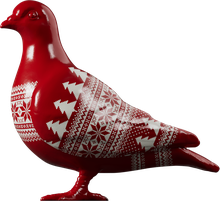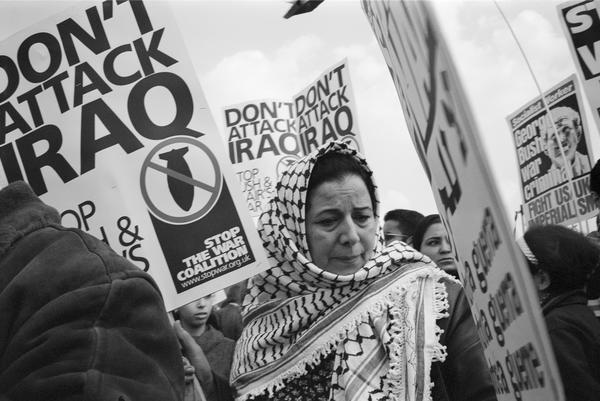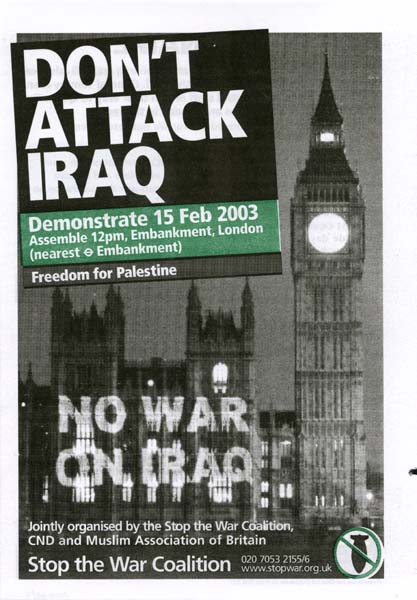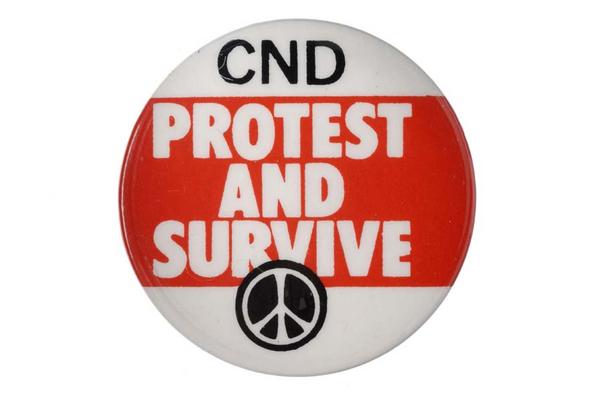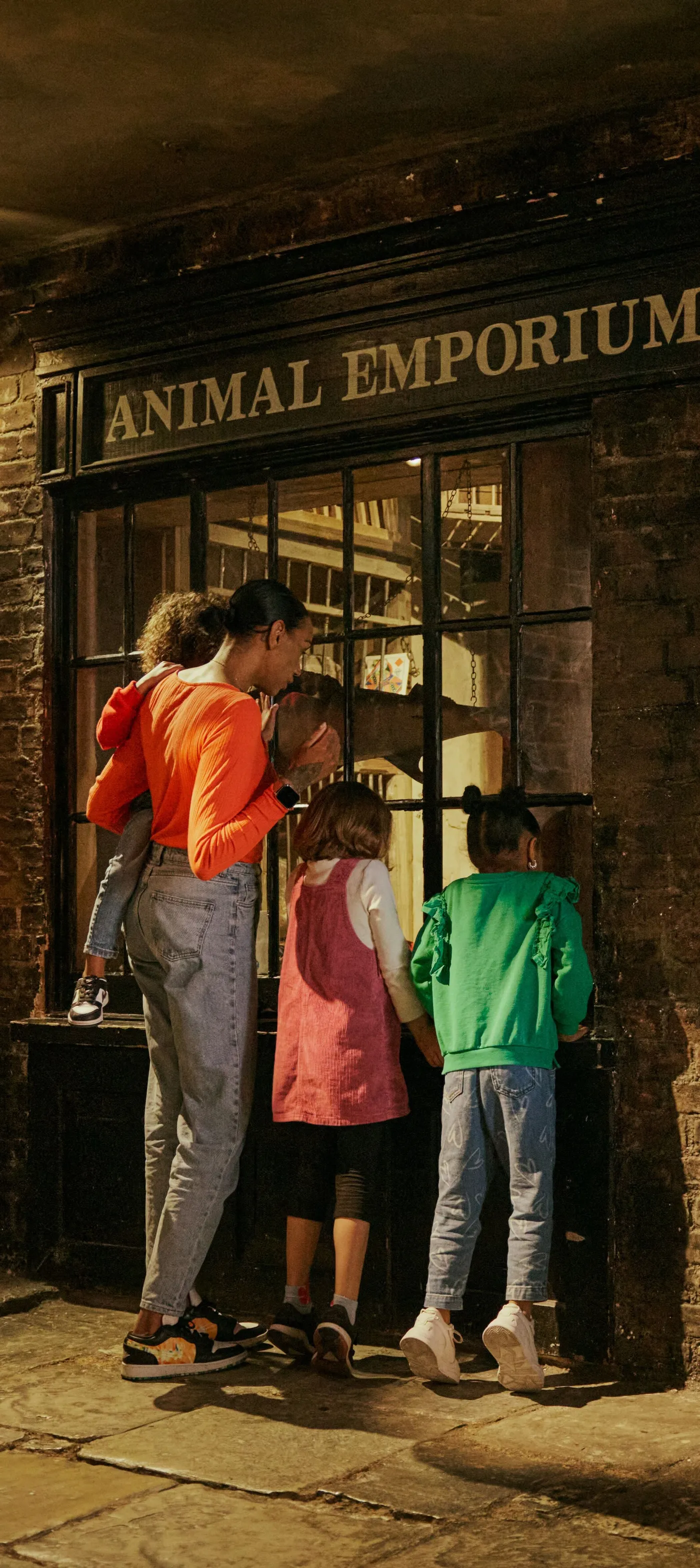Brian Haw: Protester & peace campaigner
From 2001 to 2011, Brian Haw camped in a tent at Westminster’s Parliament Square to protest against British and American foreign policy. He became a symbol of the anti-war movement. Haw’s 2006 peace camp is now in our collection, made up of over 800 objects, including campaign placards, gifts from supporters and his camping stove and bed.
Parliament Square, City of Westminster
1949–2011

Who was Brian Haw?
Brian Haw was born in Wanstead, east London, and grew up in Essex and Kent. As an evangelical Christian, Haw’s anti-war stance was based on moral rather than political beliefs. He spent years promoting peace, whether on religious missions in Northern Ireland and Cambodia, or helping people in need in his local area.

Protesting for peace
On 2 June 2001, Haw set up a peace camp on Parliament Square to protest the economic sanctions imposed by Western powers on Iraq since the 1990s. The sanctions were causing widespread malnutrition, disease and death in Iraq, particularly among children. Haw’s camp grew after the invasions of Afghanistan (October 2001) and Iraq (March 2003), both led by the United States and supported by Britain and other countries.
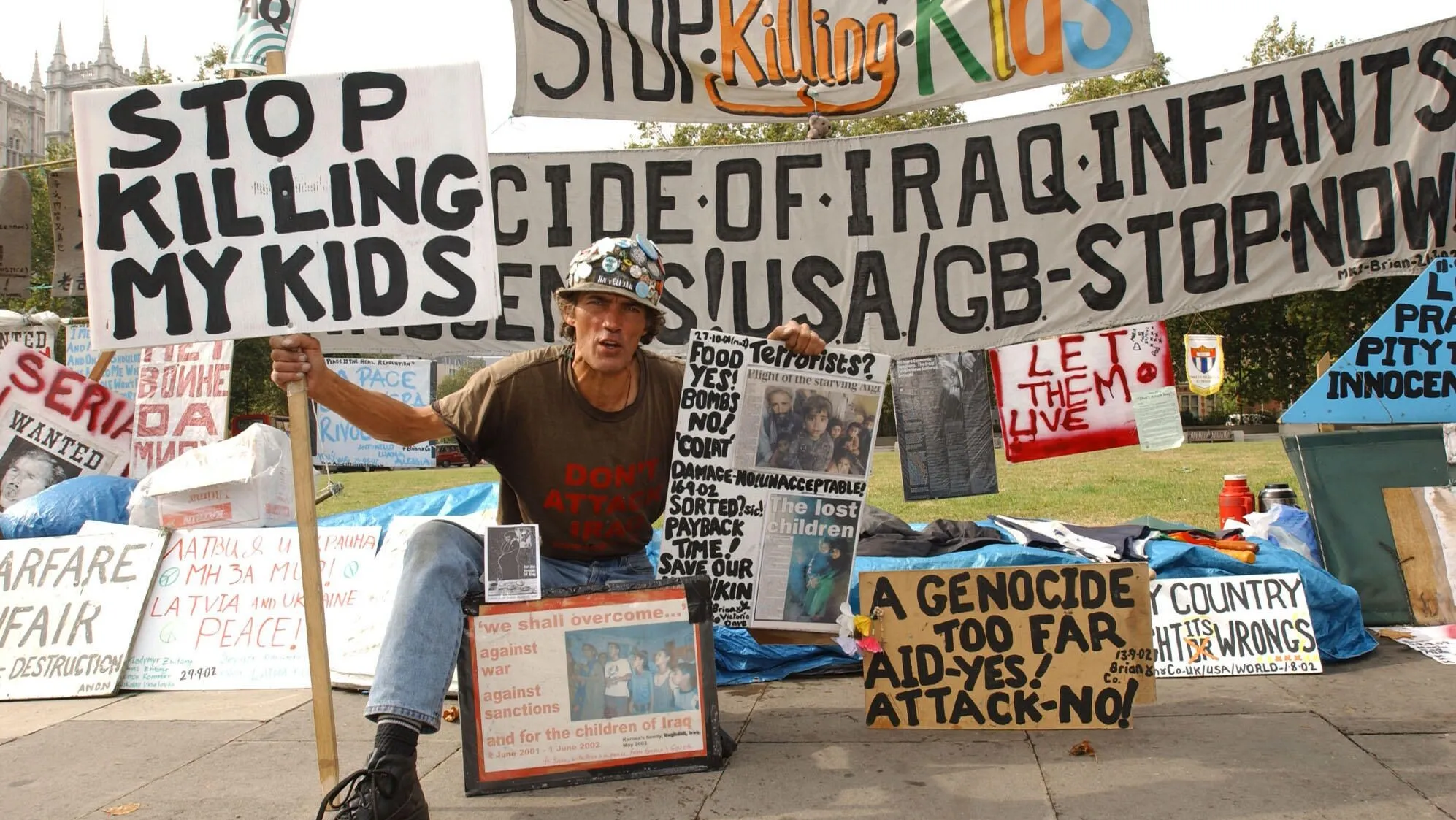
What did his protest look like?
Haw’s protest was like an ever-changing exhibition of posters, placards and sometimes graphic photographs showing the human casualties of war. Some of the material was made by him – note his distinctive handwriting of black and red capital letters – and some was made by his supporters. Haw wanted his messages to make an impact on motorists travelling past at speed.
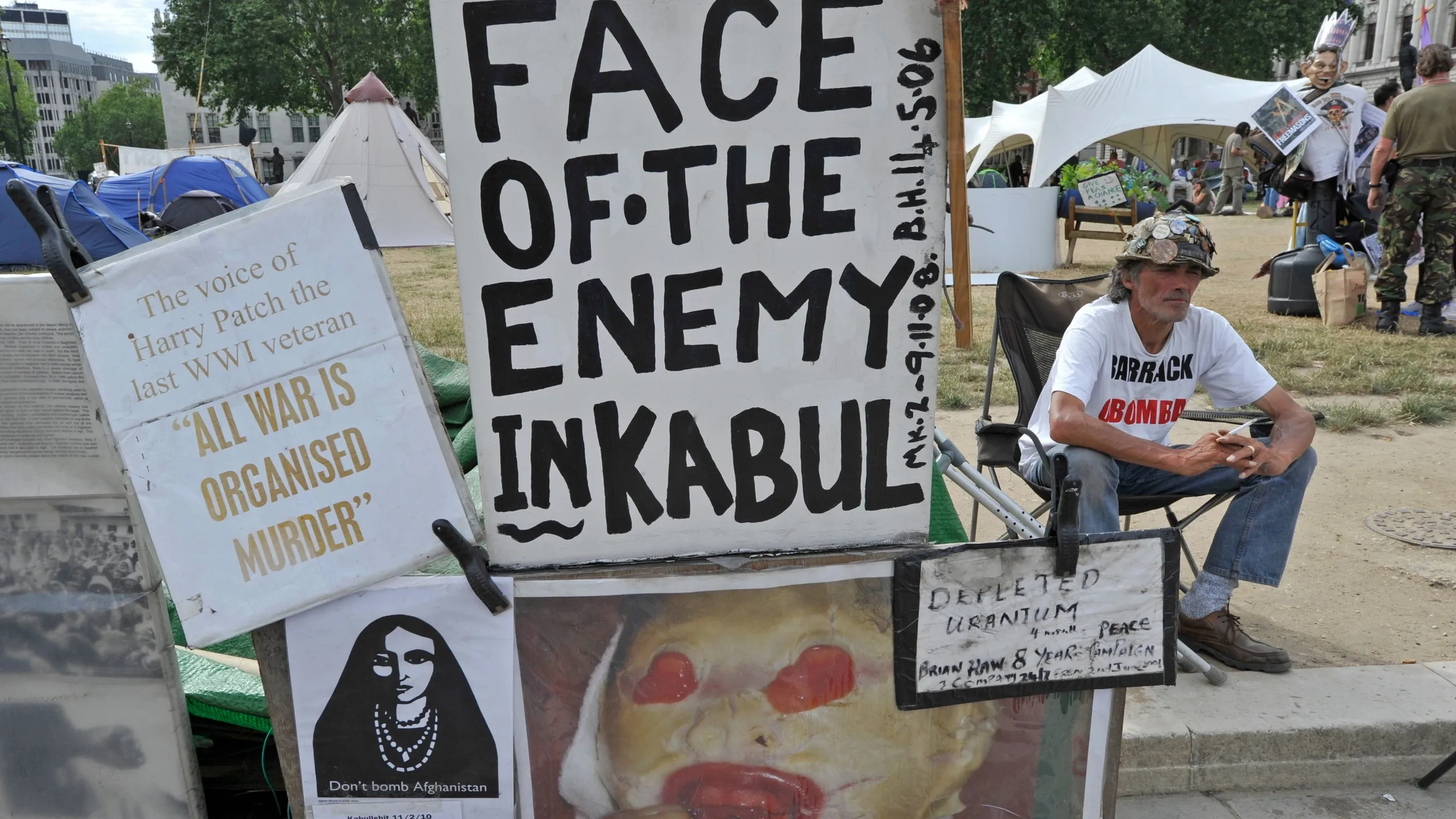
The camp demanded attention
Haw’s camp was noisy and disorderly. He placed it right across from the Palace of Westminster gates that MPs passed through to vote on issues including the UK’s wars. He even used a megaphone to get his message across. Haw’s campaign in such a visible space sparked debates about freedom of speech, the use of public space and the right to protest.
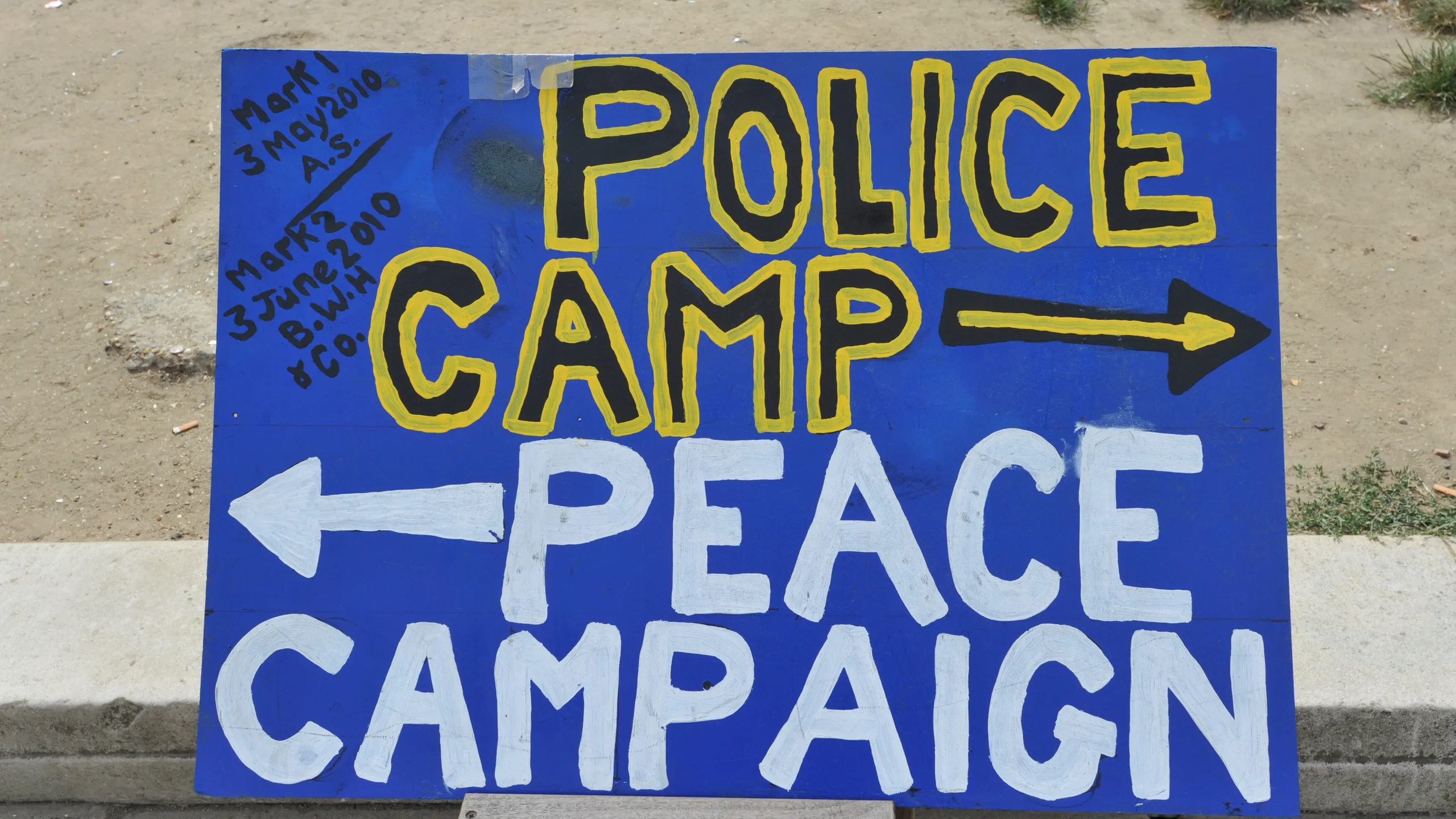
A long eviction battle
In 2005, a new government act banned unlicensed protests within one kilometre of Parliament. Haw’s protest had started before the law came into effect. He spent years challenging attempts to evict him. In May 2006, the police seized almost all of his displays and personal possessions. Haw was eventually acquitted of the charges the police brought against him, and his camp resumed on Parliament Square.
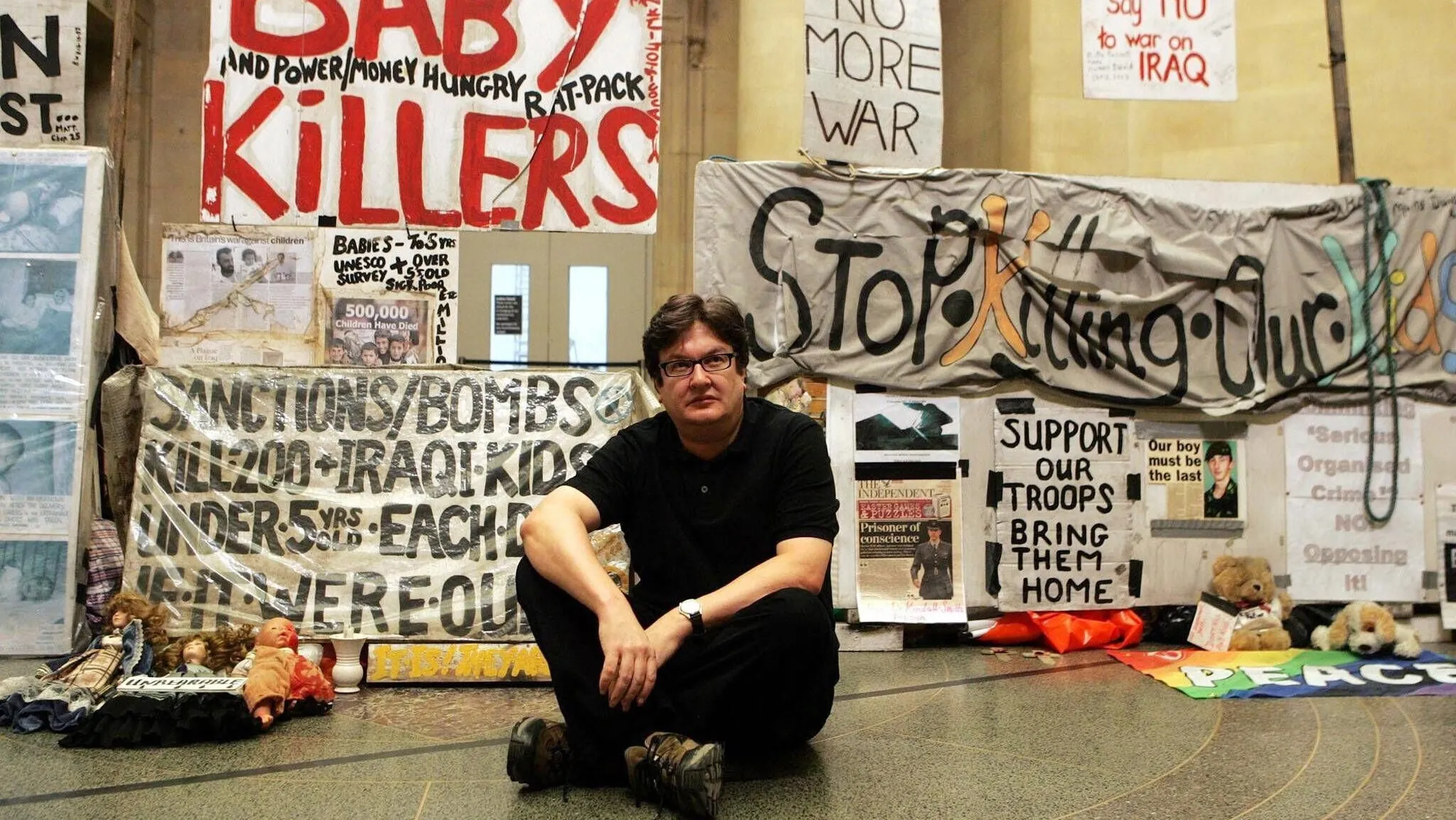
Parliament Square’s most famous resident
The continuing battle to evict and prosecute Haw attracted widespread comment and press coverage. In 2007, he was voted ‘most inspiring political figure’ in the Channel 4 News awards. The same year, artist Mark Wallinger painstakingly recreated his camp in its entirety and exhibited it at the Tate Britain gallery. The installation was called State Britain and it won the prestigious Turner Prize that December.
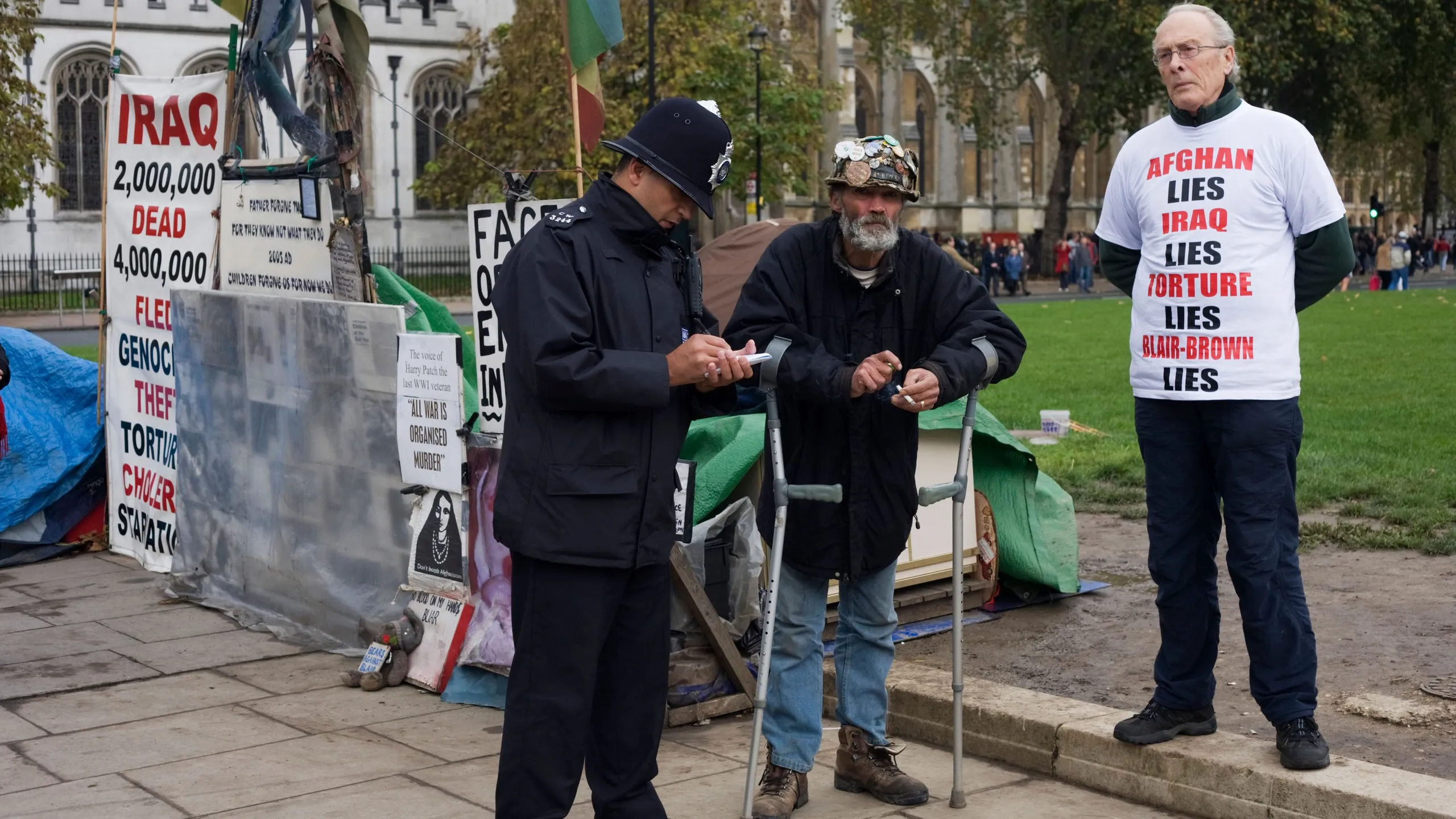
Haw’s determined protest affected his health
For a total of almost a decade, Haw persevered through cold winters and sweltering summers, exposed to the noise and pollution of Westminster traffic. “Our country is committing infanticide, genocide, the looting of nations,” he said. “I'm determined to be there until they kill me. How much longer will that be?" It took a severe toll on his health. He needed crutches in his later years.
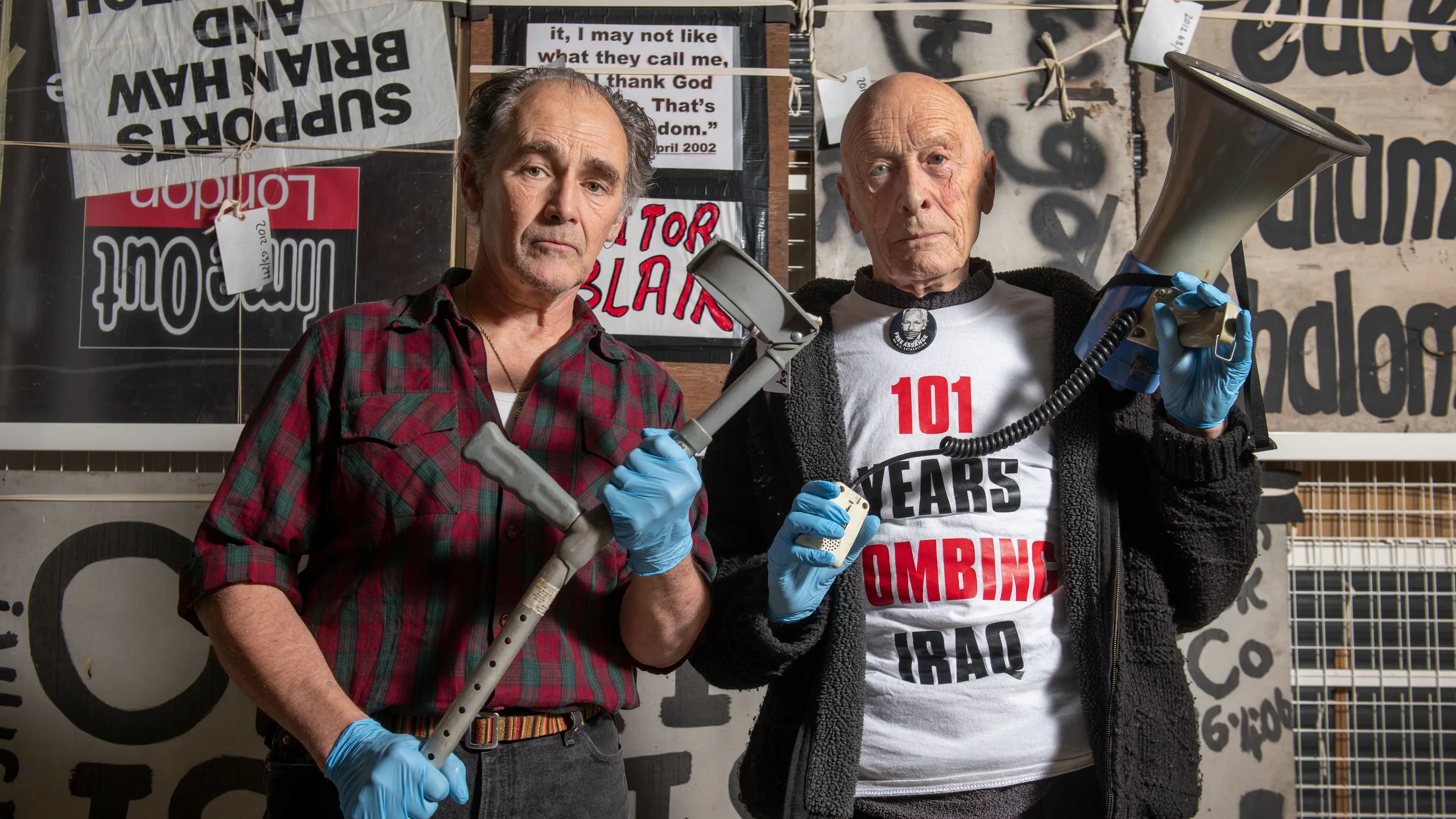
Honouring one of London’s most determined activists
In 2010, Haw was diagnosed with lung cancer. He died while receiving treatment in Germany the following year. The police returned the objects they seized from his camp in 2006 to his family, who in turn donated them to our museum. This peace camp in our collection is an important part of his legacy. And, after a campaign by the actors Mark Rylance and Michael Culver, there’s now a statue of Haw by artist Amanda Ward Culver opposite the Imperial War Museum in Lambeth.

